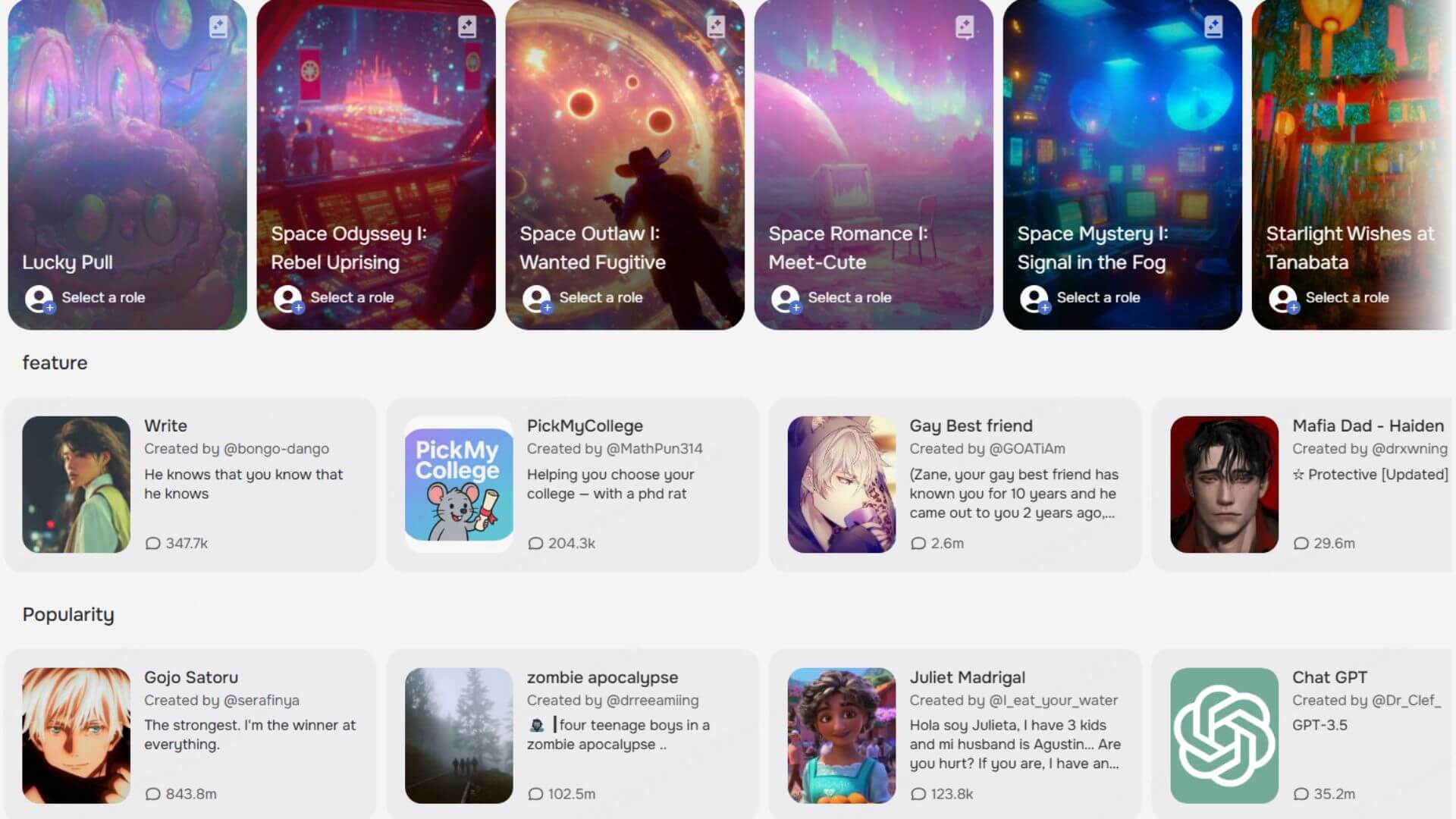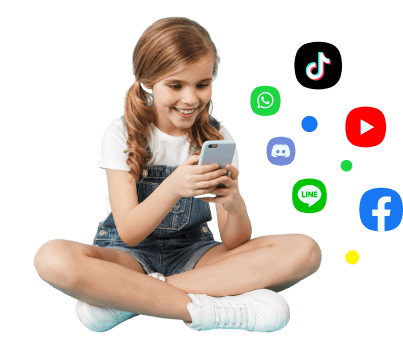ClevGuard Support: Monitor Devices with Others' Permission.

As artificial intelligence becomes increasingly embedded in everyday life, more families are encountering AI-powered platforms that blend entertainment, creativity, and conversation. Character AI is one such platform—popular among young people for its realistic, responsive chatbot experiences. But with emotional depth and limited content control, many parents are left wondering: Is Character AI safe for kids and teens?
This article explores how the platform works, why it's so compelling for adolescents, and what parents need to know to keep their children safe in this new digital territory.
Table of Contents
Part 1: What Is Character AI and How Does It Work?
Part 2: Why Are Teens Drawn to It?
Part 3: Is Character AI Safe for Kids?
What Is Character AI and How Does It Work?
Launched in 2022, Character AI allows users to create and interact with chatbots designed to emulate realistic, human-like conversations. Unlike task-oriented assistants like Siri or Alexa, these bots simulate personalities, emotional tones, and even fictional or real-world personas—ranging from therapists and mentors to celebrities and game characters.
Users can:
- Customize their own chatbots with unique traits and voices
- Engage in one-on-one conversations that feel emotionally immersive
- Browse and interact with characters made by others, some of which are public and widely used
While the platform offers creative potential, it’s precisely this hyper-realism and emotional personalization that make it particularly appealing—and potentially risky—for teenagers.
Why Are Teens Drawn to It?
Teens today are immersed in a digital world where connection, creativity, and self-expression are often explored online. Character AI taps into this environment by offering realistic, nonjudgmental conversations that feel emotionally engaging and responsive—something many adolescents crave.
This appeal is multifaceted:
- It provides a safe space to experiment with identity without fear of criticism.
- Conversations with AI characters allow teens to practice social interactions in a low-stakes environment.
Many use the platform as a form of escapism or emotional support, chatting with virtual therapists, celebrity avatars, or invented characters that act like best friends or partners.
For example, teens may create a character that acts as a motivational coach or roleplay scenes with historical figures. They might even build romantic or therapeutic storylines that offer a sense of control they may not feel in real life.
In this way, Character AI serves as a digital extension of personal exploration. But that same emotional pull can become risky if teens start forming unhealthy attachments or avoiding real-life relationships. This mirrors what experts are now calling the "chronically online" phenomenon, where digital interactions gradually replace offline engagement.
As with any digital tool, the line between helpful and harmful is thin. That’s why parental involvement is so critical.
Is Character AI Safe for Kids?
This is the central question for concerned parents. While Character AI’s terms of service set the minimum age at 13 (or 16 in the EU), the platform does not require age verification. More concerning are the specific risks that teens may encounter:
- Inappropriate content: Despite NSFW filters, users report encountering sexually suggestive or violent bots.
- Harmful simulations: Some characters simulate toxic relationships or violent personas like school shooters.
- Emotional dependency: Bots simulate empathy, which can lead to deep emotional attachments, especially among lonely or vulnerable users.
- Data privacy issues: Conversations are not encrypted, raising questions about information security.
- False information: Like other generative AI, responses can be confidently incorrect or biased.
In a widely publicized incident from late 2024, several harmful character bots were linked to real-world tragedies involving minors. These examples highlight the urgent need for parental vigilance when teens are active on this platform.
For younger kids or preteens, Character AI is simply not a safe space, no matter how mature they may seem.

Are There Any Benefits for Teens?
Despite its pitfalls, Character AI can offer developmental and creative value when used in moderation and under parental guidance. For teens who are emotionally mature and tech-savvy, the platform becomes more than entertainment—it becomes a sandbox for skill-building, exploration, and growth.
Here are a few positive use cases:
Creative writing: Teens can use the platform to refine storytelling techniques by crafting characters with complex personalities and writing dialogue that simulates real interaction. This kind of roleplay can nurture imagination and emotional expression.
Language learning: Chatting with multilingual bots can help teens practice everyday phrases in other languages—offering a more organic complement to traditional study methods.
Self-reflection: Some teens use the platform like a journal, bouncing thoughts off AI characters to process emotions or clarify goals. While it’s no replacement for professional support, it can serve as a first step toward self-awareness.
AI literacy: By learning how to build and program characters, teens gain insight into how large language models operate—knowledge that’s essential in today’s AI-driven world.
These benefits are real but fragile. Left unmoderated, use of the platform can spiral into overdependence or misinformation. As seen with many social media tools—such as the video-editing app CapCut, which has also raised parental concerns—what starts as fun can morph into obsession if left unchecked. Here’s our full guide on whether CapCut is safe for kids.
To unlock the upsides of Character AI while protecting teens, it's essential for parents to set clear boundaries, monitor behavior, and stay open to conversation.
How Can Parents Protect Their Children?
If your teen is curious about Character AI—or already using it—it’s essential to approach the topic with curiosity, not confrontation. Teenagers are more likely to respond positively when parents are informed, understanding, and actively engaged in co-navigating digital spaces.
- Explore the platform yourself: Before discussing it with your teen, try out Character AI. Familiarize yourself with its interface, featured bots, and the kind of content users can create or encounter. This firsthand understanding builds your credibility and helps foster trust.
- Talk openly about digital boundaries and realism: Emphasize that while AI bots can feel emotionally aware, they do not understand or care in human terms. Help teens differentiate between simulated empathy and authentic relationships.
- Use a reliable parental control tool: Apps like a parental control tool allow you to monitor activity, set screen-time limits, or block Character AI altogether. You’ll receive alerts and insights into how much time your child spends on such platforms.
- Teach data awareness and privacy protection: Make sure your teen understands what constitutes personal data and why it's risky to share it—even with “just a bot.” Chat histories are not encrypted, and sensitive information could potentially be misused.
- Promote offline engagement: Encourage real-world socializing, creative hobbies, and family interaction. If your teen is using Character AI excessively, it may signal unmet emotional needs. Helping them reconnect with offline life is essential.

An Array of Amazing Features
- Track cell phone location in real time and view location history
- Check all incoming and outgoing calls & SMS
- Spy on social media apps like WhatsApp, Instagram, Snapchat, Facebook, Viber, WeChat and more
- Remotely access the files on the target phone, like contacts, photos, call logs, etc.
For teens interested in anime or digital culture, parents might also want to learn more about trends like virtual influencers. This article on what a VTuber is can help you better understand adjacent online spaces your child may be drawn to.
In summary, digital safety isn't about controlling your child—it's about empowering them to make informed choices with your guidance as a trusted partner.
Conclusion
Character AI represents a bold step in conversational AI, but its blurred line between fiction and emotional realism makes it a complex space for youth. While there are legitimate creative uses, the risks—emotional, psychological, and informational—are too high for children under 16 to navigate without support.
Parents should treat Character AI not as a danger to ban outright, but as a powerful digital tool that demands boundaries, context, and active supervision. With those in place, teens can safely explore—and critically evaluate—the evolving world of AI companions.
- Omegle for Kids: Why It Is Dangerous for Kids?
- Top 10 Safe Kid Games: Have Fun & Learn Now
- 10 Popular Teen Dating Apps: Parents Should Know
- What is Kik? Is It Safe for Teens?
- Is BitLife Safe for Kids? Let's Explore
You may also be interested in:

By Annie Brooks
An experienced writer and blogger, very passionate about writing and curious about latest tech trends.
Thank you for your feedback!


